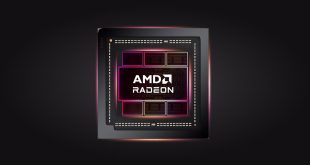We have built a system inside a Lian Li chassis with no case fans and have used a fanless cooler on our CPU. The motherboard is also passively cooled. This gives us a build with almost completely passive cooling and it means we can measure noise of just the graphics card inside the system when we run looped 3dMark tests.
We measure from a distance of around 1 meter from the closed chassis and 4 foot from the ground to mirror a real world situation. Ambient noise in the room measures close to the limits of our sound meter at 28dBa. It isn't a real world situation to be measuring with a case panel off only a few centimeters away from a video card.
Why do this? Well this means we can eliminate secondary noise pollution in the test room and concentrate on only the video card. It also brings us slightly closer to industry standards, such as DIN 45635.
KitGuru noise guide
10dBA – Normal Breathing/Rustling Leaves
20-25dBA – Whisper
30dBA – High Quality Computer fan
40dBA – A Bubbling Brook, or a Refridgerator
50dBA – Normal Conversation
60dBA – Laughter
70dBA – Vacuum Cleaner or Hairdryer
80dBA – City Traffic or a Garbage Disposal
90dBA – Motorcycle or Lawnmower
100dBA – MP3 player at maximum output
110dBA – Orchestra
120dBA – Front row rock concert/Jet Engine
130dBA – Threshold of Pain
140dBA – Military Jet takeoff/Gunshot (close range)
160dBA – Instant Perforation of eardrum

The dual fan Direct CU II isn't the quietest cooler we have experienced, spinning up significantly when under load. It is identical to the 290X version which we tested several weeks ago.
 KitGuru KitGuru.net – Tech News | Hardware News | Hardware Reviews | IOS | Mobile | Gaming | Graphics Cards
KitGuru KitGuru.net – Tech News | Hardware News | Hardware Reviews | IOS | Mobile | Gaming | Graphics Cards



Why would they move the VRM sensor to a place that is going to report hot results? surely thats an engineer foobar?
Sapphire rule the AMD roost, because they always do a proper design – and they don’t make nvidia boards either.
I read this review as ASUS cut corners, and have a cooler which isn’t quite at the same level as their competitors. I love their motherboards, but wonder about some of their design decisions once they move to other products.
So the VRM temp sensor doesn’t actually reflect the VRM’s true temperature.
The Cooler itself doesn’t fully cover the gpu (3 of 5 pipes at best it looked like?)
And they are using poorer quality Elpida memory modules, which are well known to be a source of the black screen crashes on the 290 series cards, over the far more stable Hynix modules that sapphire/gigabyte/msi use?
And all of this comes at a serious price premium (£529.99 on ocuk atm vs £439.99 for the gigabyte and £449.99 for the msi versions, which both offer better hardware).
How is this an 8/10 card? Closer to 4/10 surely given the poor decisions made and the price point compared to rival cards.
Not sure where you are getting the prices from, its £389.99 http://www.overclockers.co.uk/showproduct.php?prodid=GX-334-AS&groupid=701&catid=56&subcat=1752.
Unless you are looking at the 290x cards and getting mixed up.
My bad, you’re right there.
Nevertheless, the rest stands for all versions of the 290’s, and it still sits at a ~10% price premium vs other cards of its type, while still having the same hardware flaws. It’s just more pronounced with the X version.